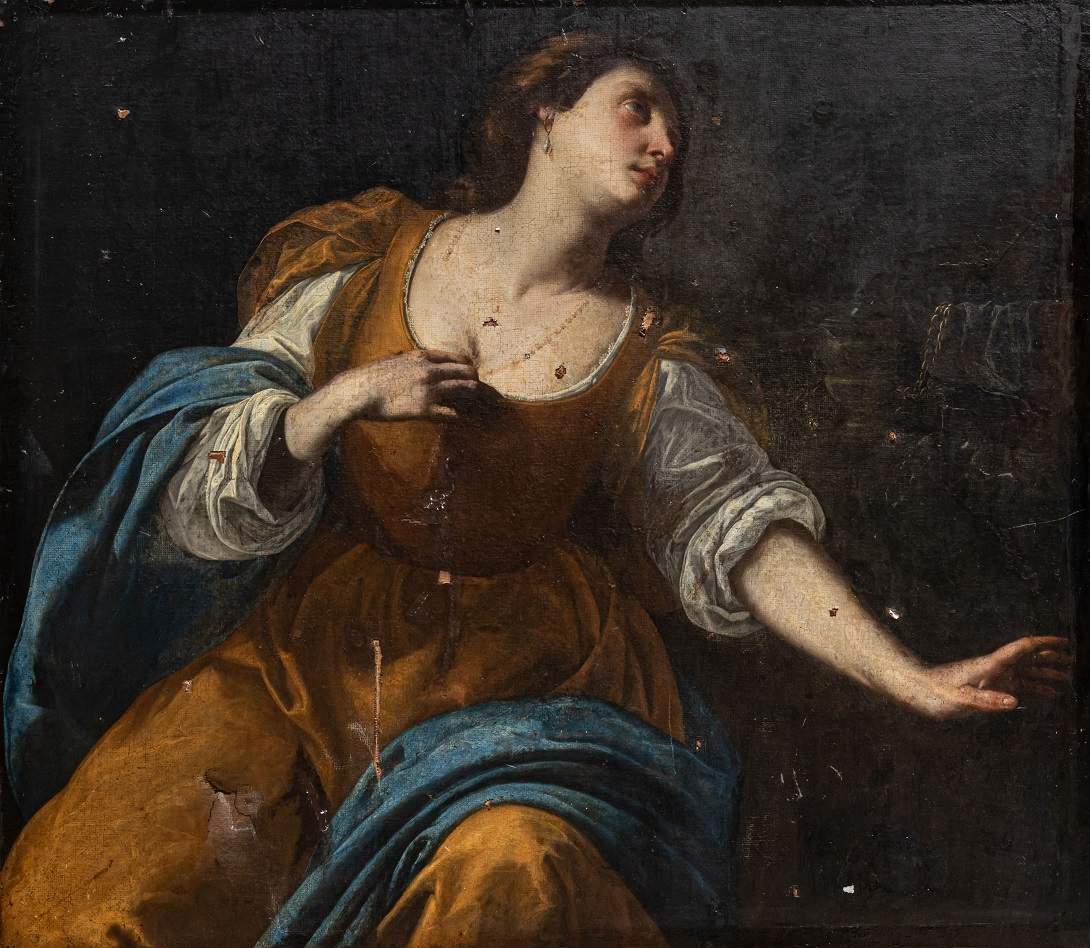Two paintings attributed to Artemisia Gentileschi rise from 2020 Beirut blast
They could be by Artemisia Gentileschi (Rome, 1593 - Naples, after 1654) two paintings that were heavily damaged during the August 4, 2020Beirut explosion that left 207 dead and about 7,000 injured and devastated a large part of Lebanon’s capital. Lebanese art historian Gregory Buckhakjian, who is very familiar with the place where the two paintings were stored, namely Sursock Palace, a lavish 19th-century residence near the port, is convinced of this. In the days following the explosion, Buckhakjian offered his help during the emergency and got to know closely the works stored at Sursock Palace, including the two paintings attributed to Artemisia.
Buckhakjian discussed his doctoral thesis, at the University of the Sorbonne (in 1993), specifically on the Sursock Palace collection. The works arrived in Lebanon in 1920, with the core collection of Alfred Sursock, who had married the Neapolitan Maria Teresa Serra di Cassano: the collection included works by several 17th-century Neapolitan artists, such as Luca Giordano and Andrea Vaccaro. Buckhakjian first had the idea of an attribution to Artemisia at that time: however, at the time, he told Hyperallergic magazine, “it was still the work of a student. When I discussed my thesis, my teachers told me it was very convincing and that I should continue my research and publish it. But I didn’t, because at that time, after I returned to Beirut, I was completely upset by what was happening in the city and I forgot about Artemisia [the Lebanese civil war had recently ended, ed.] My priorities were about the city, reconstruction, etc.”
The investigation thus ended up in a drawer until last year, when the paintings came back to his attention: the works are a Hercules and Onphale, which according to Buckhakjian dates to the early 1730s, and a Penitent Magdalene from around 1640. The Lebanese art historian compared the Beirut works with other known paintings in the painter’s catalog, dwelling on both details (drapery, jewelry, connotations) and compositions, and finding several similarities. One of the two works, the Penitent Magdalene, was on loan for the exhibition The Ladies of Art in Milan (Palazzo Reale), and the attribution had been confirmed by Riccardo Lattuada, a specialist on Artemisia Gentileschi. Other confirmations came from scholar Sheila Barker, according to whom some elements (such as the type of jewelry, facial types, and fabrics) refer to Artemisia’s typical manners.
The two paintings are still unpublished: however, it is very likely that Buckhakjian will publish some study on them soon, just as it is certain that the two works will go for restoration given the damage they suffered during the explosion (even the work exhibited in the Royal Palace still shows the marks suffered during the explosion).
Pictured: the Penitent Magdalene
 |
| Two paintings attributed to Artemisia Gentileschi rise from 2020 Beirut blast |
Warning: the translation into English of the original Italian article was created using automatic tools. We undertake to review all articles, but we do not guarantee the total absence of inaccuracies in the translation due to the program. You can find the original by clicking on the ITA button. If you find any mistake,please contact us.




























